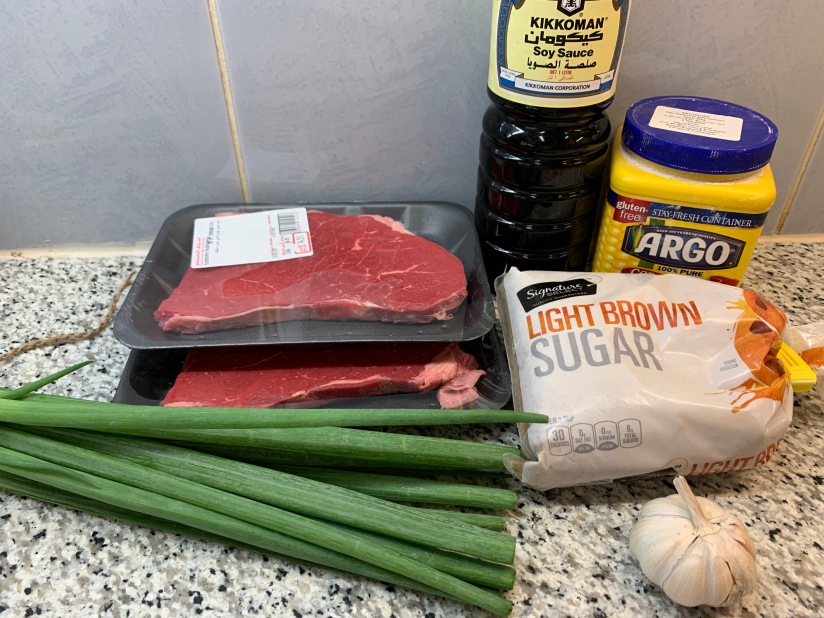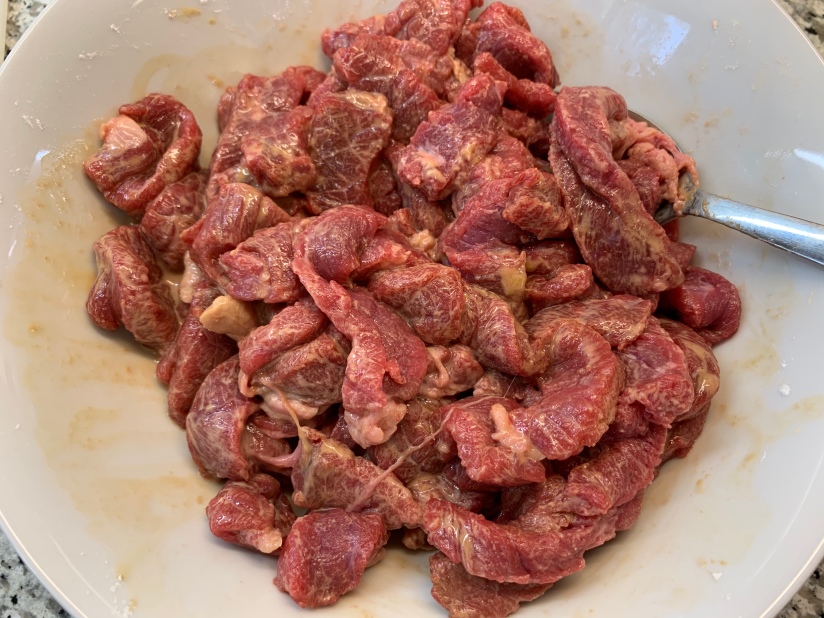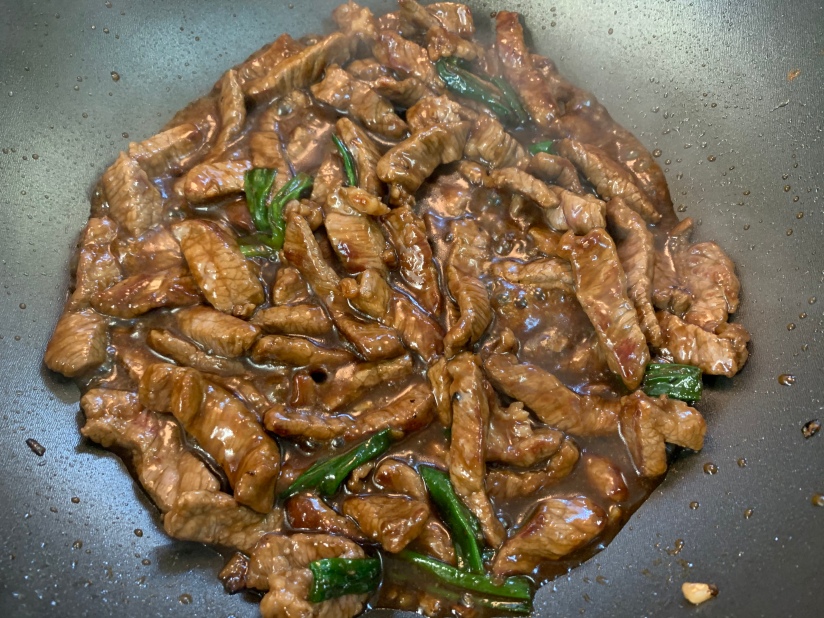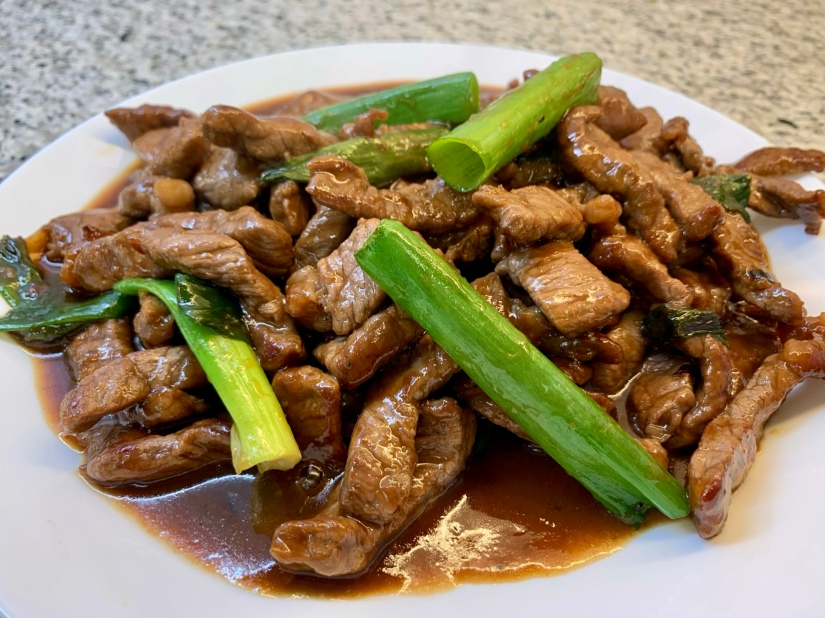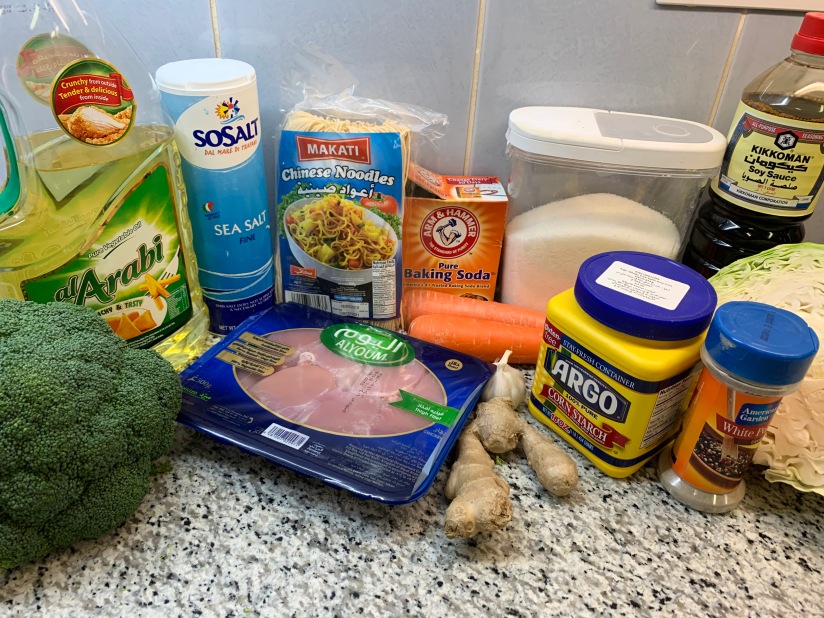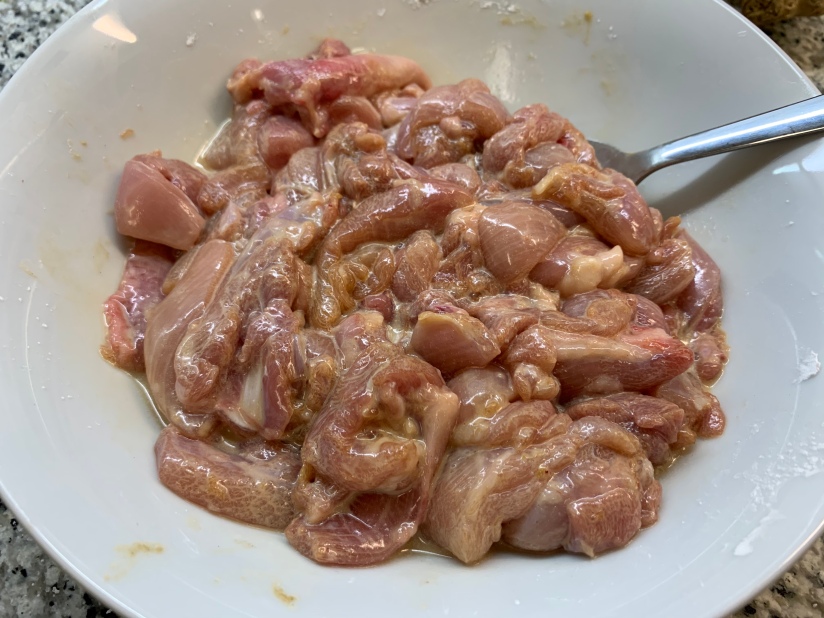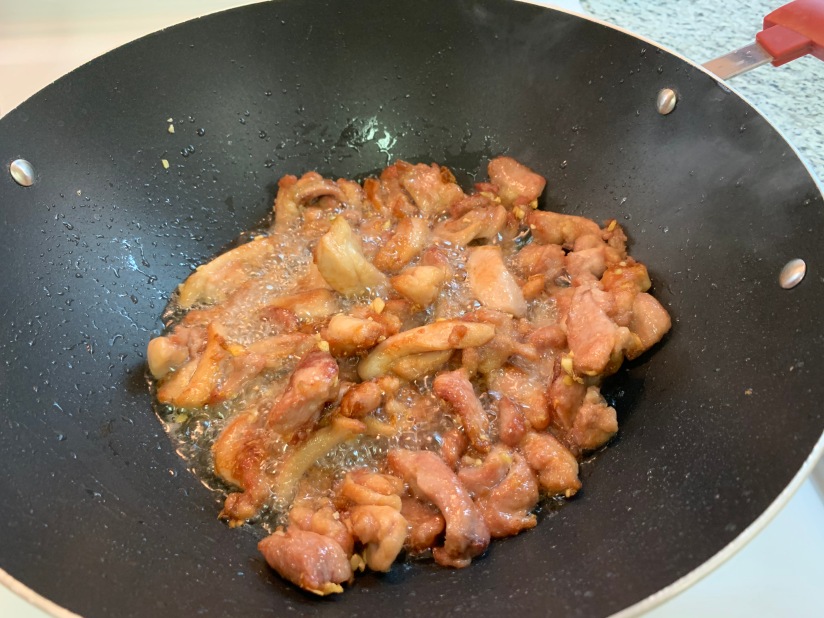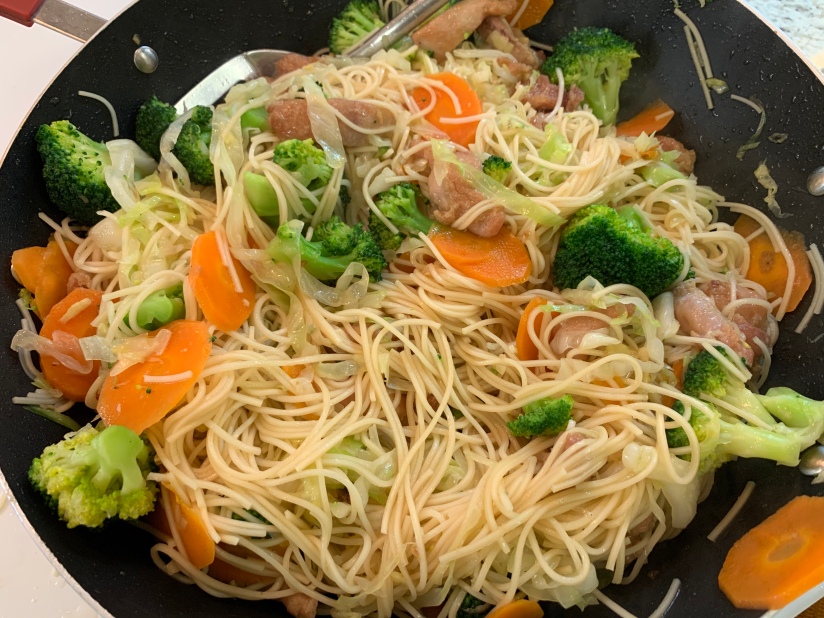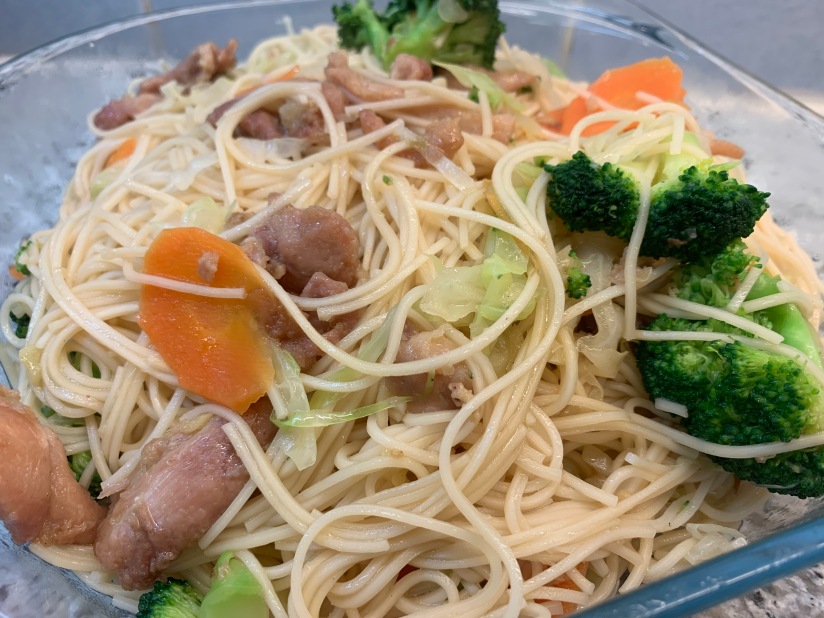If you’ve never been to a Chinese/Hong Kong bakery, you need to try and remedy that immediately. The best ones are in Vancouver (my favourite is Michelle Cake House in Kerrisdale) probably because there are so many people who are originally from Hong Kong there. Unfortunately, and of course, there are none here in Moose Jaw. My friend Katharina says there’s a place in Regina but when we tried to check it out, it was closed for renovations so I can’t comment on that just yet. Of all the yummy Hong Kong-style buns, my favourite ever since I was a kid is gai mei bao which literally translates into cock (chicken) tail bun. No actual chicken tails in these buns though. If you’ve never had gai mei bao before, they’re filled with the yummiest buttery coconut filling; sooo good. These buns are also the favourite of my family and ever since I introduced them to Rock, he has become completely obsessed. Every time we go to Vancouver for a visit, my dad feeds Rock gai me bao throughout our stay and then also picks up like a dozen right before we leave for Rock to bring back.
Anyway, since it’s still Arctic temperatures outside today, it seemed like the opportune time to give these bad boys a try. I don’t know anyone that’s ever made gai mei bao from scratch, but I guess our recent bagel-making has given us a boost of confidence in our baking abilities. I’ve given separate recipes for the 3 parts that go into these buns just ‘cus it’s easier to follow: the dough, the filling, and the topping.
Makes 12.
bun dough: water roux (150 ml water + 3 tbsp all-purpose flour) / 2 eggs / 1/4 cup sugar / 2 tbsp butter / 1 and 1/4 cups bread flour / ~ 1 and 1/4 cups all-purpose flour (you may need up to another 1/4 cup or so if the dough is sticky) / 2 and 1/4 tsp active dry yeast (plus 1 tsp sugar + 1/4 cup warm water to proof)
bun filling: 1 cup unsweetened fine coconut / 1 cup all-purpose flour / 1/3 cup custard powder / 1 and 1/4 cups butter / 1/2 cup sugar / 1 cup whole milk powder / 2 tbsp water (this makes quite a lot of filling but there’s nothing worse than biting into a gai mei bao and it’s mostly bun with only a little bit of filling smack in the middle. my feelings towards filling is similar to my feelings towards sauce: the more the better)
bun topping: 1/8 cup butter ( room temperature) / 1/8 cup all-purpose flour / 1 egg, beaten / 1/2 tsp sugar / ~ 1 tbsp raw sesame seeds / sugar syrup (1 tbsp sugar mixed with 1 and 1/2 tbsp hot water)

First things first, make the dough. I had never heard of a water roux before but after doing some googling, it’s apparently a roux that was invented in either China or Japan to make breads softer and springier. Sounded good to me because gai mei bao and other Chinese buns are always especially nice and soft. To make the water roux, combine the water and flour in a saucepan over medium heat and stir constantly for a couple minutes so that it will cook and thicken up. Remove from the heat and add in the sugar and butter and stir in until dissolved. Let the water roux mixture cool and in the meantime proof your yeast with the warm water and the sugar. After the roux mixture’s cooled down, add in the eggs and combine until smooth. In a large mixing bowl/stand mixer bowl, combine the bread flour, all-purpose flour, water roux mixture and yeast. Knead until smooth. If the dough is wet and sticky, add a bit more flour. Let the dough rest in the bowl covered with a tea towel for about 45 minutes or so and it should rise up to almost double in size.
While the dough is resting, move onto the filling a.k.a. the best part. Start heating up the flour and custard powder over medium heat in a medium sauce pan. Then add in the butter and sugar and stir until all melted in. Remove from the heat and mix in the coconut, the milk powder, and the water.
Once the dough has doubled in size, punch it down and then roll the dough into a long log. Cut the dough into 12 equal pieces. Using your hands, just kinda press and gently stretch each piece of dough into an oval that’s about the size of your hand. Place 2 heaping tablespoons of the filling into the middle of the dough and then carefully pinch the edges together to wrap around the filling, gently stretching the dough a bit if you have to. I found it easiest to pinch together the sides starting in the middle. Once it’s well sealed, smooth the pinched edges down a bit and gently shape the bun into kind of an oval shape. You’ll have a little bit of filling leftover by the way, which you can just discard. Better to have made too much filling than too little, I figure! Once all the buns have been formed, place them with the sealed sides down on a parchment lined baking sheet and let them rest under a tea towel for about 15 minutes.

While the buns are resting, preheat the oven to 350F and make the topping. For the topping, combine 2 tbsp of the beaten egg, the butter, sugar and flour together in a small bowl and mix until it’s a smooth paste. Spoon the paste into a makeshift piping bag by using ziplock bag that’s had one corner snipped off. This paste will be used to put the characteristic stripes onto the gai mei bao. When the buns are done resting, brush the tops with some of the beaten egg, pipe 1 stripe across each end of the bun, then sprinkle some sesame seeds across the middle.

Bake for about 15 minutes or until the top are golden brown. In the meantime, just stir together your simple sugar syrup. As soon as the buns are out of the oven, gently brush the sugar syrup over the tops to give the buns a nice gloss.


So that was quite a bit of work but they turned out really good! OK, so some of them looked kinda ugly because we didn’t form them all into perfect oval shapes, but not bad for a first attempt. Also, it would be better if you could line up all the buns side by side in 2 rows, which we couldn’t do because, like I said, ours weren’t all well shaped. Next time! But they taste just like what you would get at a Chinese bakery so I’m really happy. The water roux apparently works miracles ‘cus the buns really were super soft and light. And the filling tastes exactly right. I wasn’t sure if this recipe would work out but it did so definitely give it a try. You will love these buns; gai mei bao are the best! Rock was so stoked with the results, he even high-fived me. Rock says they’re just as good as the ones in Vancouver or they may be even better because we made them ourselves.
